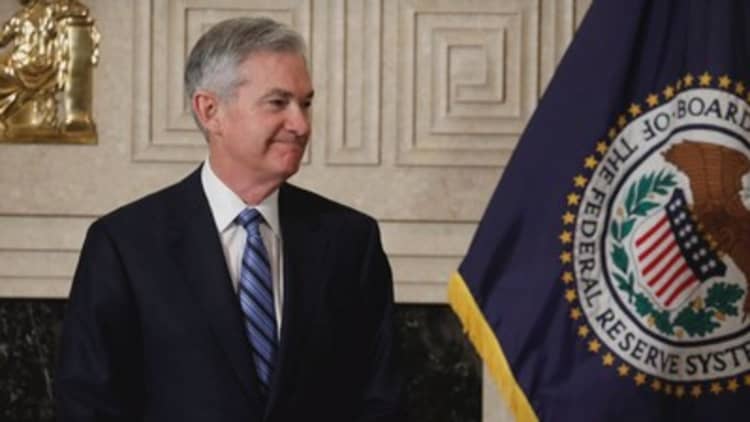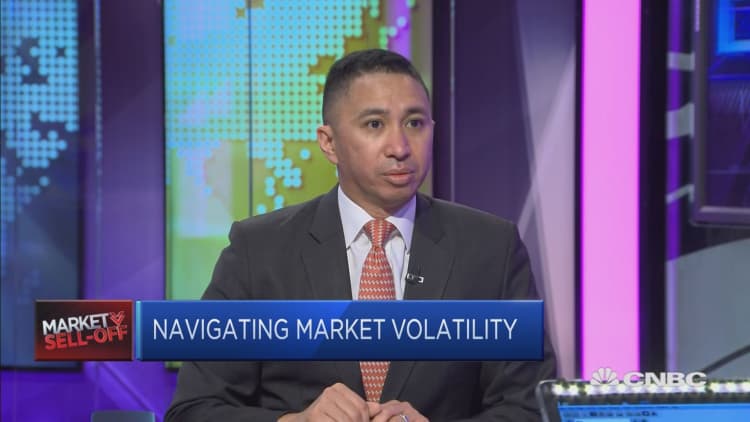
New Federal Reserve Chairman Jerome Powell may have a few surprises in store for the market, judging by past statements he has made behind the central bank's closed doors and some whispers going around Wall Street.
Powell took the helm of the Fed on Monday, succeeding Janet Yellen, of whom he is considered a close ideological ally. Though the events seem more a matter of coincidence than causation, markets greeted the new central bank chief with a stomach-churning slide.
While there seems little fear that Powell will be hostile to markets, assuming that he is going to be a carbon copy acolyte of Yellen could be a mistake.
There are a few potential points of contrast.
One is in comments Powell made during Federal Open Market Committee meetings in 2012, the year he was seated as a central bank governor. At several meetings then he expressed serious reservations about the direction of monetary policy, questioning the efficiency of the Fed's low-interest-rate money-printing philosophy at the time.
Since being seated as governor in June 2012, he has never once dissented from the majority opinion. But he worried at several points over the long-run ramifications that the extreme easing measures could cause.
"I think we are actually at a point of encouraging risk-taking, and that should give us pause," Powell said at the October 2012 FOMC meeting, transcripts of which were released that November and have been the subject of a good deal of murmuring around Wall Street.
The idea that the Fed was pushing people into stocks and other risky assets is probably the most common criticism of the post-crisis monetary remedies. But Powell also wasn't convinced that the second prong of the Fed's approach that entailed buying up Treasurys and mortgage-backed securities was particularly impactful.
His comments came as the Fed was embarking on what effectively was the fourth leg of its asset purchase program, this one named QE3, for quantitative easing. Some in the market nicknamed it "QE Forever" or QEternity" for its open-ended nature after previous iterations set a specific total for how much the Fed would be buying.
"I suspect that the channels that we're using now, which principally are asset prices, may not be working at all as well as our models say," he said at the July meeting, two months ahead of the QE3 implementation. "On the list of potential costs, I would include inflation, the difficulty of exit, the risk of creating expectations we can't meet, the prospect of capital losses, market function, and the grab bag of stability issues."
Ultimately, Powell deemed the costs "manageable" and he ultimately voted to proceed.
But in December 2012, he expressed additional worries.
"I'm concerned that the actions contemplated in this meeting are setting us on a path to a much larger balance sheet with likely benefits that are not commensurate to the risks that we're bearing," he said at that meeting. "It will be very difficult to get off that path unless we begin to prepare the markets starting with this meeting."
Powell's sentiments as expressed to his board members since then are not known, as 2012 is the most recent year for which transcripts are available.
However, markets are wondering the path he will try to chart, and how he will communicate his intentions.
More news conferences?
One such way of keeping the public better abreast of what the Fed is up to would be having Powell go into more detail after each meeting. As things are done now, the Fed chair holds question-and-answer sessions with the media only once a quarter, when officials update their economic expectations.
Having news conferences at the other four FOMC meetings has been discussed before and could get another hearing now that there's a new chairman.
The impact would do more than simply provide information. In the market's eyes, it would make every meeting "live," or one where the Fed could raise rates or enact other policy changes. With the current setup, the market has come to expect that rate hikes only will happen when there's a Q&A after.
Doing so further might make investors show a little more caution about risk, for which Powell has expressed concern.
"We are not making a call that this change will happen, but we think there is a material possibility that it could," Krishna Guha, economist at Evercore ISI, said in a recent note to clients. "The effect would be to make the market view all eight Fed meetings a year as 'live' meetings at which the FOMC might decide to raise/lower interest rates and in the near term at least it would come over hawkish."
Such a change isn't likely to happen soon.
But given Powell's concern over market behavior it would be a tool worth considering depending on how conditions unfold over time.
"Given the inflation numbers, if he decides they need to raise rates a little more quickly, this would give them a little more flexibility," said Gus Faucher, chief economist at PNC. "
"Is it going to make or break the Fed? I don't think so. They have gradually over time moved to more transparency, which I think is a good thing," he added. "The marginal benefit of having the press conference after every meeting is pretty small."
In fact, Joe LaVorgna, chief economist for the Americas as Natixis, thinks the Fed should do less talking, not more.
Central bank officials have suffered through moments of clumsiness through the years, with sometimes disparate messages along with forecasts that often have not aged well.
In fact, one other change Powell could bring to the Fed, according to observers, is eliminating the quarterly summary of economic projections and coming up with some alternative to show where officials believe GDP, unemployment and inflation are heading.
"I'd probably do fewer meetings and fewer press conferences," LaVorgna said. "It's not as if the Fed has a crystal ball. Their forecasts have been worse than consensus for a long time. You're just going to get more disinformation."
WATCH: Powell's communication challenge.



